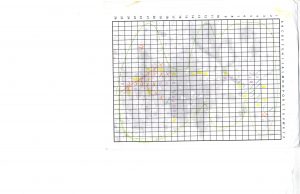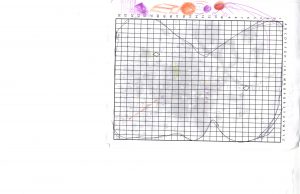Pressure Project 3: Galaxy Quest
Posted: December 4, 2017 Filed under: Pressure Project 3, Zach Stewart Leave a comment »The Other Galaxy Quest
(it has nothing to do with the movie, kids, and is kinda imperialistic, oops!)
Conquer Galaxies by being the first to create a network of outposts before your opponents.
The great creator is has brought to life new galaxies in the universe. The great creator needs someone to colonize these galaxies so that they may begin producing life. Four potential colonizers have been picked for the job. Whichever colonizer is able to create the strongest string of outposts in the galaxy gets the honor of colonizing it.
Players: 4
Instructions:
- Four players start by choosing a character and a related number (ex. Darth Vader and 3)
- The game is played on a specially made game board, composed of a grid (which you will find in the back of this sheet of paper). The goal of the game is to linearly connect 6 pieces of the grid together either vertically, horizontally, or diagonally by placing your character’s assigned number in a grid square during your turn.
- Each game is played in a uniquely different galaxy. Every new game the galaxy is drawn by the “creator” (via isodora). The galaxy’s perimeter is then manually translated by the players to the game board grid using their best judgement. The galaxy is always drawn so that it occupies as much of the game board as possible while simultaneously not being stretched in its proportions. If the galaxy’s perimeter produced by the creator is no closed, it is up to the players to close in the gaps of galaxy so that it is a solid 2d form.
- The “creator” then issues 3 special coordinates. These coordinates are marked on the game board by the players with a diamond symbol. These coordinates act as shared outposts by the players for which any player can use as part of their string of 6. If a special coordinate is marked outside of the boundary of the galaxy’s perimeter, the special coordinate becomes null and will not be used in the game.
- After board has been created, the game will start. Each player has only 2 seconds per turn to mark their number in one of the squares on the grid. Grid squares that have been intersected by the galaxy’s perimeter are not able to be claimed by any of the players for an outpost. Once a player has successfully connected 6 grid squares in a row by marking them with their number the game is over and the spoils of the galaxy go to them. If no one is able to connect 6 squares together, the game is over and the creator destroys the galaxy.
The game runs in tandem with an Isodora patch that has characters for players to pick and it also has the scene that produces the galaxy for the game board.
The feedback and results of the game were all really positive. It took a couple of rounds for my classmates to get a grasp on the concept of the game, but in the end it made for a very competitive experience. The game was successful in the sense that it not only created a great game to play, but also watch. The pace of the game kept plays and the audience on the edge of their seats as they fought not to miss a single beat. Although some people found the game too quick, I personally found the pace of the game fun.
Moving forward I would want to revisit my wording of the rules because I was unable to hand off the game to my classmates for them to play independently. Also, it may be helpful to refine how Isodora creates the galaxies as some do not create playable boards while others are seeming too big.
Below are some of the results from my games (featuring the lovely doodles of Bita Bell)

